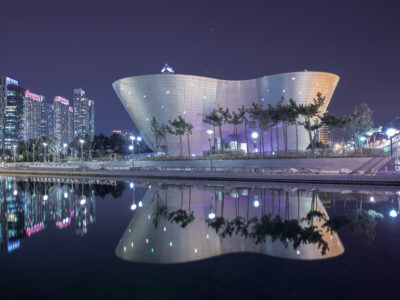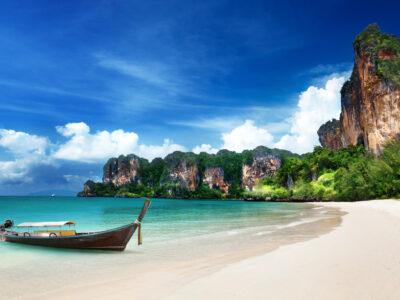On the South Korean island of Jeju, the local women dive up to 10 metres below sea level every day to gather food.
A bunch of sprightly Korean women, some of them in their 80s, arrive at the Hyeopjae Beach, Jeju Island, at dawn. They are dressed in black diving suits and carry round baskets with orange floaters.
With practised ease, they adjust their wetsuits and coat their masks with vegetable oils to avoid fog on the glass. Each of them is armed with a heavy knife, a sickle for cutting seaweed, a broad-bladed knife for removing sea urchins, and a hoe for pulling out sea creatures.
We watch, breathless, as they dive in. This community of women divers is called ‘haenyeo’ in Korean. They dive up to 10 metres below sea level every day to gather food. The haenyeos have to hold their breath in the deep, enduring the strong pressure for more than one minute in one go. So much so, the city of Jeju hosts a memorial to the female divers who have lost their lives in the dangerous work.
To us, it sounds spine-chillingly risky. For them, it is sustenance—the island isn’t agriculture friendly, so they must rely on fishing and trading their catch for a living.
After a minute or so, which seems like an eternity considering they have gone down without any breathing equipment, they rise to the surface of the water, and exhale. While rising, they make a curious bird-like sound called sumbi-sori, which is both a unique breathing technique and a sign of acknowledging other divers’ presence.
The community is divided by diving skills into sang-gun (upper skilled), jung-gun (middle skilled) and ha-gun (lower skilled). A 70-year-old haenyeo tells us she started swimming at the age of eight and by the time she was 13, her father told her to go and catch seaweed. She became a sang-gun when she was just 20.
Small bonfires sit on the seashore. Around these, the women place their catch, change their clothes, exchange notes and rest in between diving sessions.
Our eyes widen at the sight of the final catch—an abundance of seashells, octopus, abalone, clams, squid and more! We are invited to taste the freshly harvested sea life that they have scooped from the sea, fresh and cold.
The haenyeos today
Daughters of the present haenyeos are not keen to follow in their mothers’ diving flippers. With only around 5,000 haenyeos left on Jeju-do, schools are helping to preserve the legacy by teaching anyone who wants to learn haenyeo diving skills.
The students are not only taught to free-dive but also to master marine knowledge and haenyeos’ special underwater diving techniques.
The community does its best to protect the environment. To them, nature is not just a means of livelihood but also a mother, child and friend.

Park Hong Bai President, Jeju Tourism Organisation
In conversation with Park Hong Bai, President, Jeju Tourism Organisation
What are the major attractions on the island?
Jeju Island is rich in natural treasures and resources, with well-preserved forests that are drawing wellness tourists. There are over 360 distinctive volcanic cones across the island, spewed by the Hallasan Mountain which stands in the centre of the island.
Jeju is famous for its seafood. Is it an easy place for vegetarian Indians?
Besides its wealth of seafood, Jeju houses livestock products as well as organic and vegetarian food. We also have a few well-known Indian restaurants.
Jeju is a popular honeymoon destination for Koreans. How ready is it to host newly weds from abroad?
A lot of Indians are now coming to Jeju for pre-wedding shoots and many are interested in holding weddings here as well. The only problem is food. We have restaurants, both Indian and otherwise, but the number of people coming from India for weddings is too many for a restaurant to host. Once that is resolved, we will have no problems in hosting Indian weddings in Jeju.
JEJU-DO: KEY FACTS
• Formed two million years ago by volcanic activity, the isle of Jeju-do (‘do’ stands for an ‘island’ in Korean) is the largest on the Korean peninsula.
• The island’s haenyeo designated as UNESCO Intangible Cultural culture was Heritage in 2016.
• Jeju is also known as the ‘Island of the Gods’ because of approximately 18,000 gods that have been worshipped here throughout history. According to a legend, predecessors of Jeju Islanders were actually demi-gods.
5 THINGS TO DO ON JEJU ISLAND
• Hike up the volcanic crater of Jeju called Sunrise Peak in Seongsan-ri. Here, you can see the Haenyeo Women Diver Show between 1:30-3:00 pm.
• Walk to the Sea Women Restaurant or House of Women Divers, where haenyeos prepare their fresh seafood harvests for visitors.
• In spring (March-May), you can witness the haenyeos worship Jamsugut, the goddess of the sea at the seaside shrine. Women in orange gowns tie white ribbons around plants at the island and perform a ritual prayer and celebration of their safety at sea. During this time, the sea is full of small colourful straw ships that are set off the coast, loaded with offerings.
• For those who wish to learn all about their history and culture, Gujwa-eup, Cheju in Jeju-do houses the Haenyeo Museum.
• Take a bus tour of the island, exploring all its major attractions without spending much time or money.























